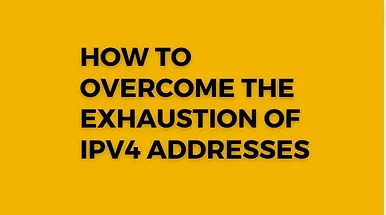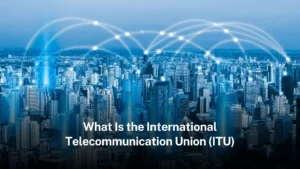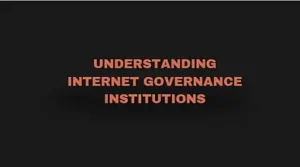The Internet has undergone an incredible transformation since its inception. From its early days when a few connected computers shared a limited number of IP addresses, the Internet has evolved into a global network of billions of devices.
The Internet is the place where the entire world meets. You can understand why the addressing system that made this growth possible, IPv4, faces challenges it was never designed to overcome.
Let’s explore the causes of IPv4 address exhaustion, its impact on the tech world, and the solutions that have been devised to address this issue.
IPv4 Address Exhaustion – The Growing Problem of a Dwindling Supply
IPv4, the addressing structure that underpinned the Internet for decades, relies on a 32-bit address space.
Theoretically, it allows for roughly four billion unique IP addresses. In the early days of the Internet, this seemed more than sufficient. However, with the explosive growth of the Internet and the unpredictable number of connected devices, we now find ourselves grappling with the stark reality of IPv4 address exhaustion.
Causes of IPv4 Address Exhaustion
The story of IPv4 address exhaustion began with a combination of factors. As the Internet expanded in the 1990s, the traditional network allocation system led to inefficient IP distribution.
In the past, organizations often received far more IP addresses than they needed. There was little thought into a sustainable system of IP address distribution. This early mismanagement of IP addresses still affects us today.
In addition to inefficient allocation, the rapid growth of Internet users, mobile devices, and home devices further strained the IPv4 address pool. Before we knew it, we’ve gone through rapid online growth that started from dial-up to broadband connections and the proliferation of hand-held devices like mobile phones.
The Impact of IPv4 Exhaustion
The effects of IPv4 address exhaustion are rarely discussed but are experienced by organizations worldwide. Difficulty in connecting new devices to the Internet has become a significant issue, particularly for businesses and organizations that require multiple IP addresses for their services.
The shortage of IPv4 addresses has also led to increased costs. Smaller companies with limited budgets feel this effect more acutely.
Moreover, IPv4 exhaustion has stymied innovation and growth in the technology sector. Startups face challenges entering the market. Established companies encounter obstacles in expanding their online presence or launching new products.
The cost of obtaining additional IP addresses has become a significant hurdle. Again, this is felt more pressingly by small businesses and individuals. This situation not only limits accessibility but also raises expenses related to finding alternative solutions.
Often, businesses that rely on connectivity experience network performance problems and compatibility issues with certain applications.
The Role of IPv6 in Addressing the Issue
The solution to the problem of IPv4 shortage lies in transitioning to IPv6. IPv6 holds a substantially larger address space. We’re talking about approximately 340 undecillion possible unique combinations with 128-bit length addresses.
This means every device can have its unique public address without sharing it with others.
The transition to IPv6 is essential for addressing the limitations of IPv4. Moreover, it ensures there are enough unique addresses for all Internet devices and services for the foreseeable future. IPv6 also brings improved security and better performance.
Alternative Solutions to IPv4 Exhaustion
In addition to IPv6, several other solutions have been employed to manage IPv4 exhaustion. Network Address Translation (NAT) allows multiple devices to share a single public IP address, Classless Inter-Domain Routing (CIDR) optimizes IP address space allocation, carrier-grade NAT (CGNAT) helps ISPs provide more customers with Internet access using fewer IPv4 addresses, and subnetting increases the efficiency of address space utilization.
While all these alternatives are workable, they are more of a band-aid solution: they don’t exactly offer a long-term fix.
Closing Thoughts
The Internet’s future depends on our ability to address the limitations of IPv4.
We need to work together to ensure that there are enough unique addresses for all Internet devices and services.
IPv4 address exhaustion is a pressing issue that affects the Internet and the technology sector as a whole.
IPv6 is the long-term solution. But we’re a long way from there.
NRS stands as an advocate for business owners between now and the ideal future. We help ensure that businesses will retain their rightful access to the Internet. Join NRS today in fighting for the online future that you deserve.





Pingback: - NRS
I just visited a page similar to this one, but the material wasn’t as interesting as what’s here.
Hello there, You have done a great job. I?ll certainly digg it and personally suggest to my friends. I’m confident they’ll be benefited from this website.
I’m often to blogging and i actually admire your content. The article has actually peaks my interest. I’m going to bookmark your web site and maintain checking for brand spanking new information.
Generally I do not read article on blogs, but I wish to say that this write-up very forced me to try and do it! Your writing style has been amazed me. Thanks, very nice post.
Fantastic site you have here but I was wondering if you knew of any forums that cover the same topics talked about in this article? I’d really love to be a part of online community where I can get feed-back from other knowledgeable individuals that share the same interest. If you have any recommendations, please let me know. Appreciate it!